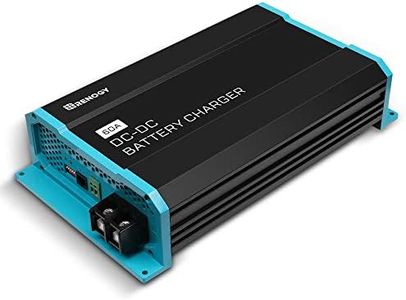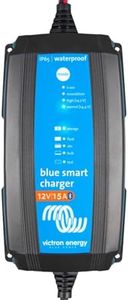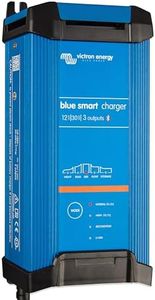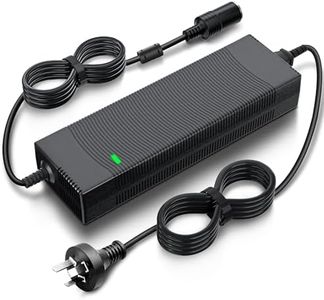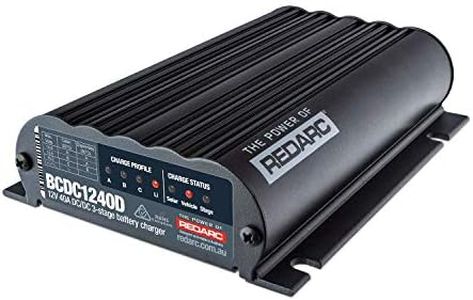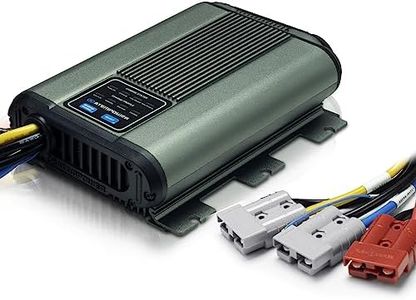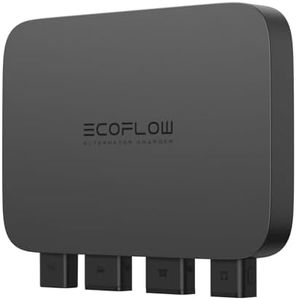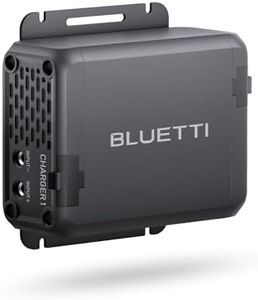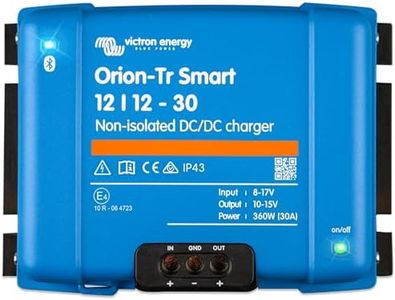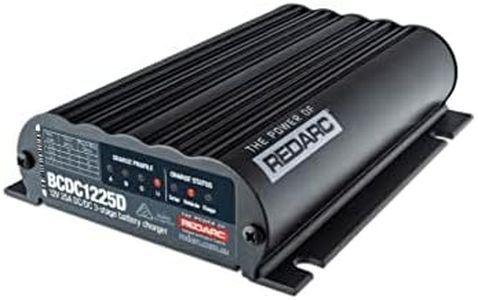We Use CookiesWe use cookies to enhance the security, performance,
functionality and for analytical and promotional activities. By continuing to browse this site you
are agreeing to our privacy policy
10 Best Converter Charger For Rvs
From leading brands and best sellers available on the web.Buying Guide for the Best Converter Charger For Rvs
Choosing a converter-charger for your RV ensures your electrical system runs smoothly by converting shore power (AC) into battery-friendly DC power while charging your RV’s battery. The right model can make life on the road much easier, protecting your battery’s lifespan and powering all your 12V devices. Understanding key specifications will help you select a charger that matches your RV’s needs and travel style.Output VoltageOutput voltage is the voltage the converter provides to charge the batteries and run DC-powered equipment in your RV. Standard RV systems use 12V, but it’s crucial to confirm this matches your RV’s setup. A consistent and correct output voltage protects your battery from overcharging or undercharging, both of which can shorten battery life or cause unreliable performance. Typically, you’ll see 12V converters, which are perfect for most RVs; make sure to match this to your own system. If you're unsure, check your RV’s electrical panel or owner’s manual.
Output Amperage (Charging Capacity)Amperage is a measure of how much current the converter-charger can provide at one time. This directly affects how quickly it can charge your batteries and how many appliances it can support at once. Low-amperage units (20-40 amps) are fine for small RVs or those with basic needs, while mid-range (45-60 amps) chargers suit average setups with moderate energy use, such as families or people with more devices, and high-output models (70 amps and above) are intended for large RVs or users with lots of electronic gear. Choose a capacity that covers your normal use and a little extra for times when you might use more power—think of running the lights, fridge, water pump, and maybe some entertainment devices at the same time.
Converter-Charger Type (Single-Stage vs Multi-Stage)Converter-chargers come in different types, mainly single-stage or multi-stage (often called smart or three-stage chargers). Single-stage delivers constant voltage, which works but can reduce battery life by overcharging. Multi-stage chargers adjust voltage as needed, improving charging efficiency and greatly extending battery health. If you value long battery life and efficiency, a multi-stage charger is worth considering since it safely brings the battery to full charge before tapering off. For basic use or infrequent charging, a simple single-stage may suffice, but most RVers benefit from the improved battery care of multi-stage chargers.
Compatibility with Battery TypesNot all converters are suitable for every battery chemistry. Typical RV batteries include Lead-Acid (flooded or AGM) and, increasingly, Lithium (LiFePO4). Some chargers work with all these types, while others are limited. It’s essential to pick a charger specifically designed for your battery to ensure proper voltage and charging cycles. If you plan to upgrade to lithium batteries in the future, choose a model that can handle them even if you don’t use them now. Always check compatibility to avoid damage and to get the best efficiency and lifespan from your battery.
Cooling and NoiseConverter-chargers generate heat and usually include fans to keep them cool. Cooling design affects how loud the unit is during operation. More basic models have fans that run continually, while higher-quality units only turn on the fan as needed, keeping things quieter. If noise is an issue for you—perhaps you camp in close quarters or just prefer a quieter environment—look for a unit with variable-speed or temperature-based fans. For users who don’t mind some background noise or install the converter in a separate compartment, standard models work just fine.
Protections and Safety FeaturesConverter-chargers should have protection features like overvoltage, overcurrent, short-circuit, reverse polarity, and thermal protection. These protect both your RV and your batteries from electrical mishaps. The more robust the safety features, the more reliable and worry-free your setup will be. If you do a lot of unattended charging or install your unit in a harder-to-access spot, prioritizing safety features is a smart move. For basic or casual use, built-in fuses and thermal protection still offer good peace of mind.


